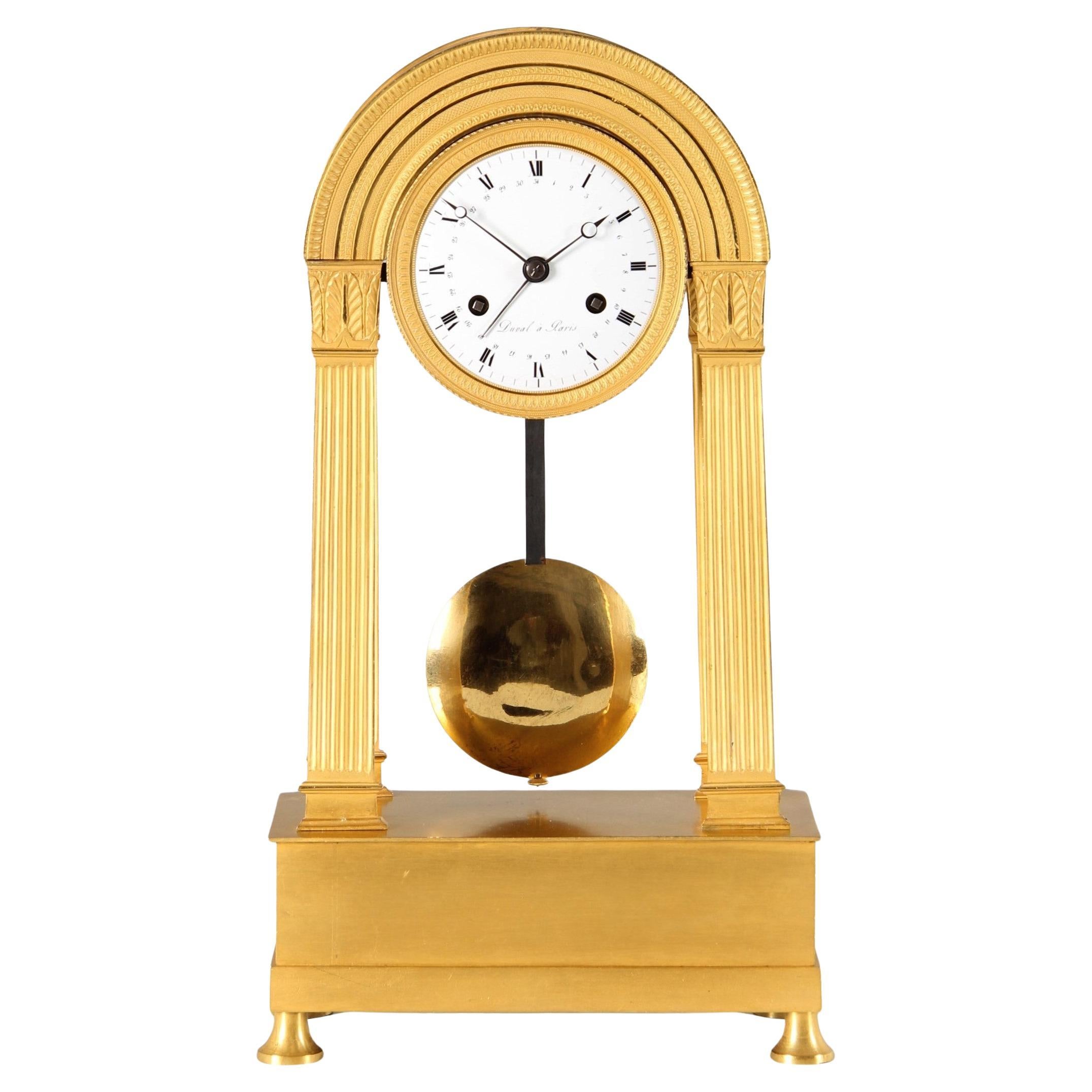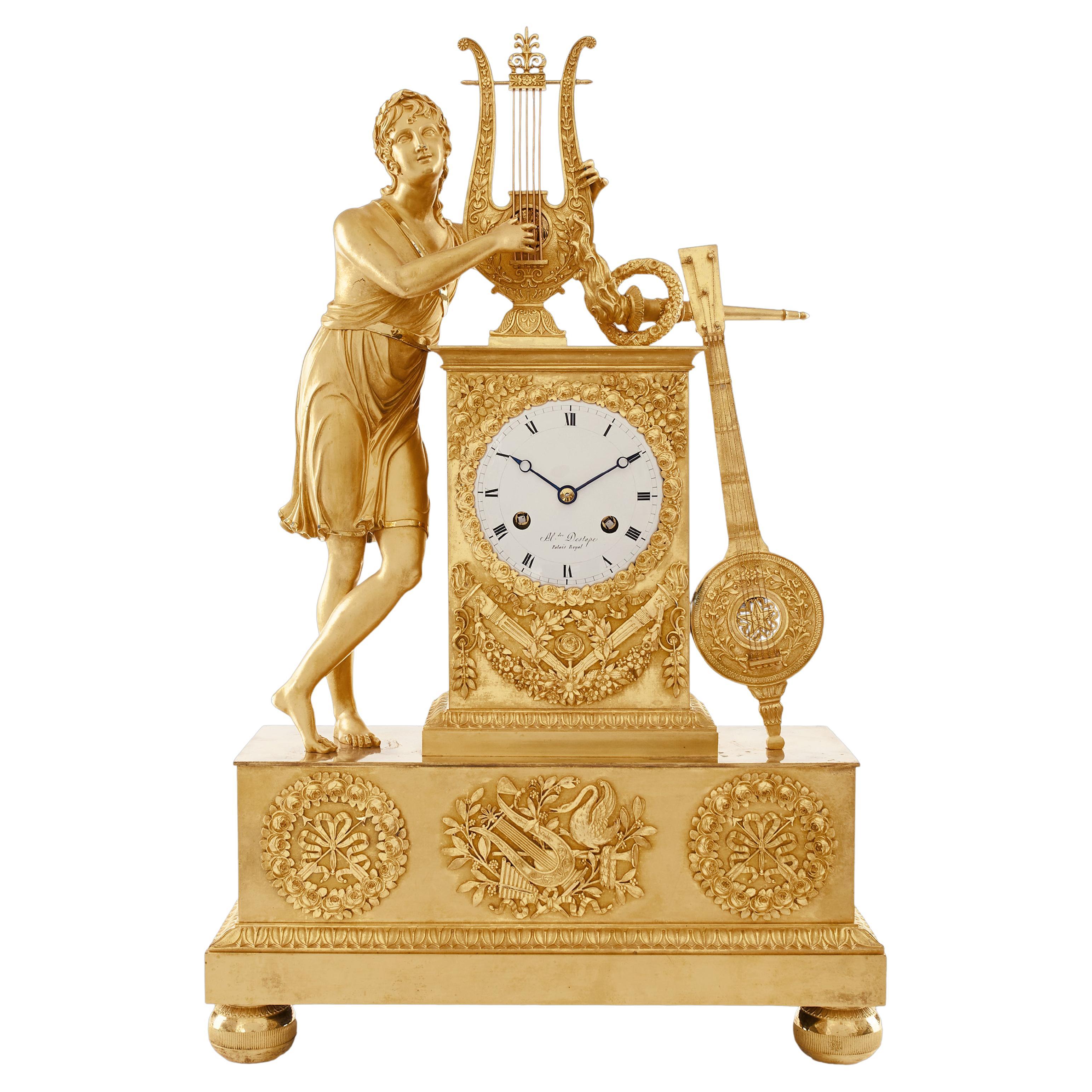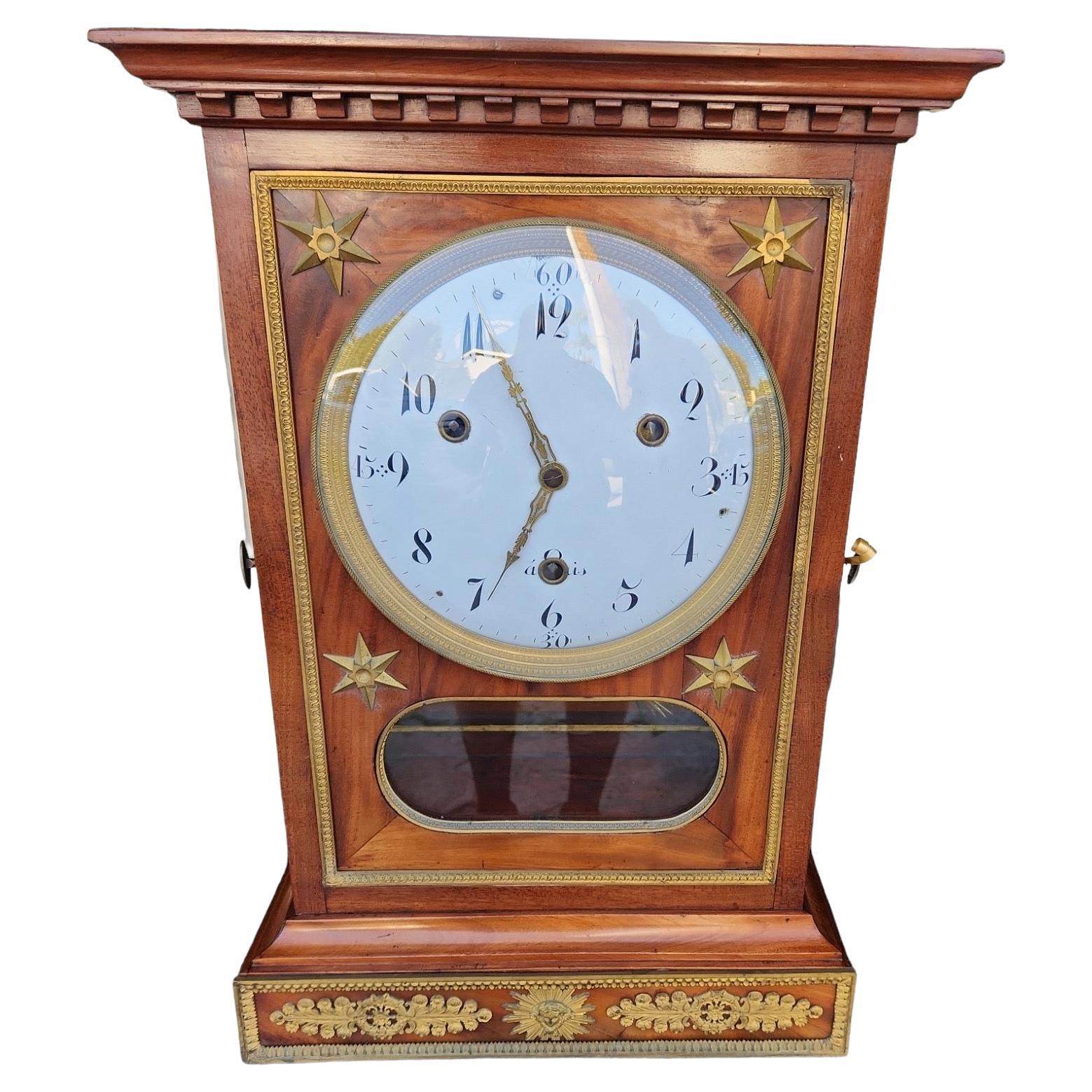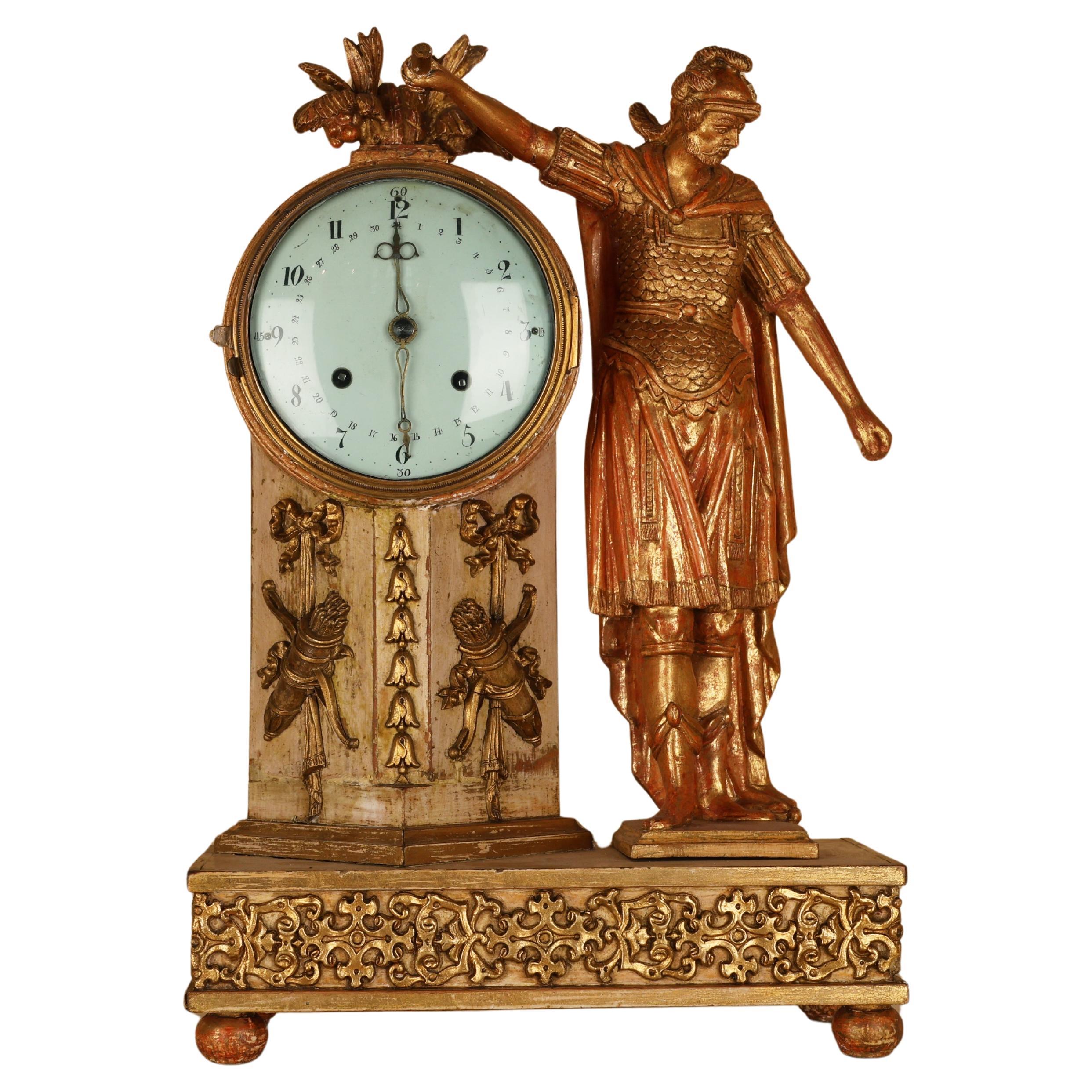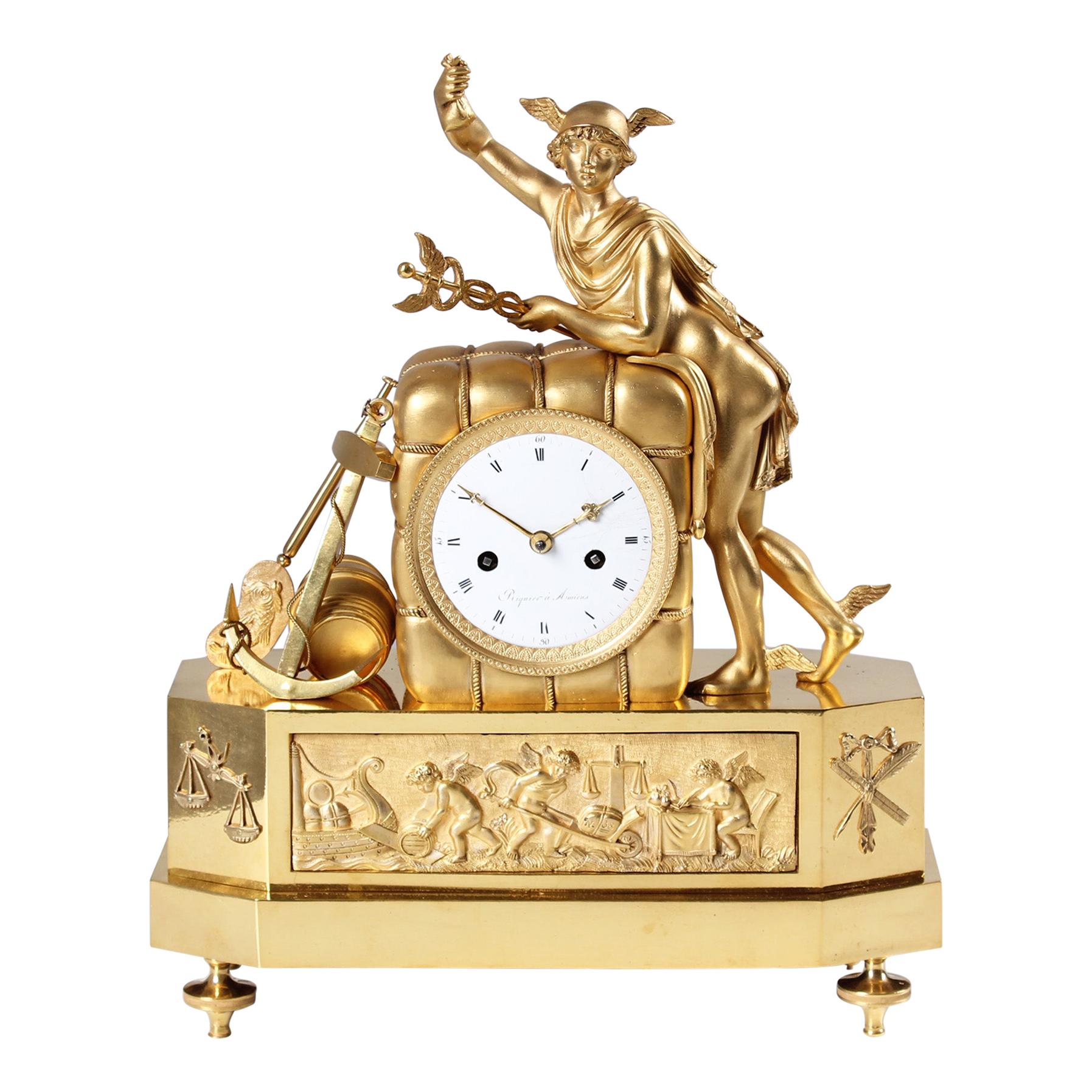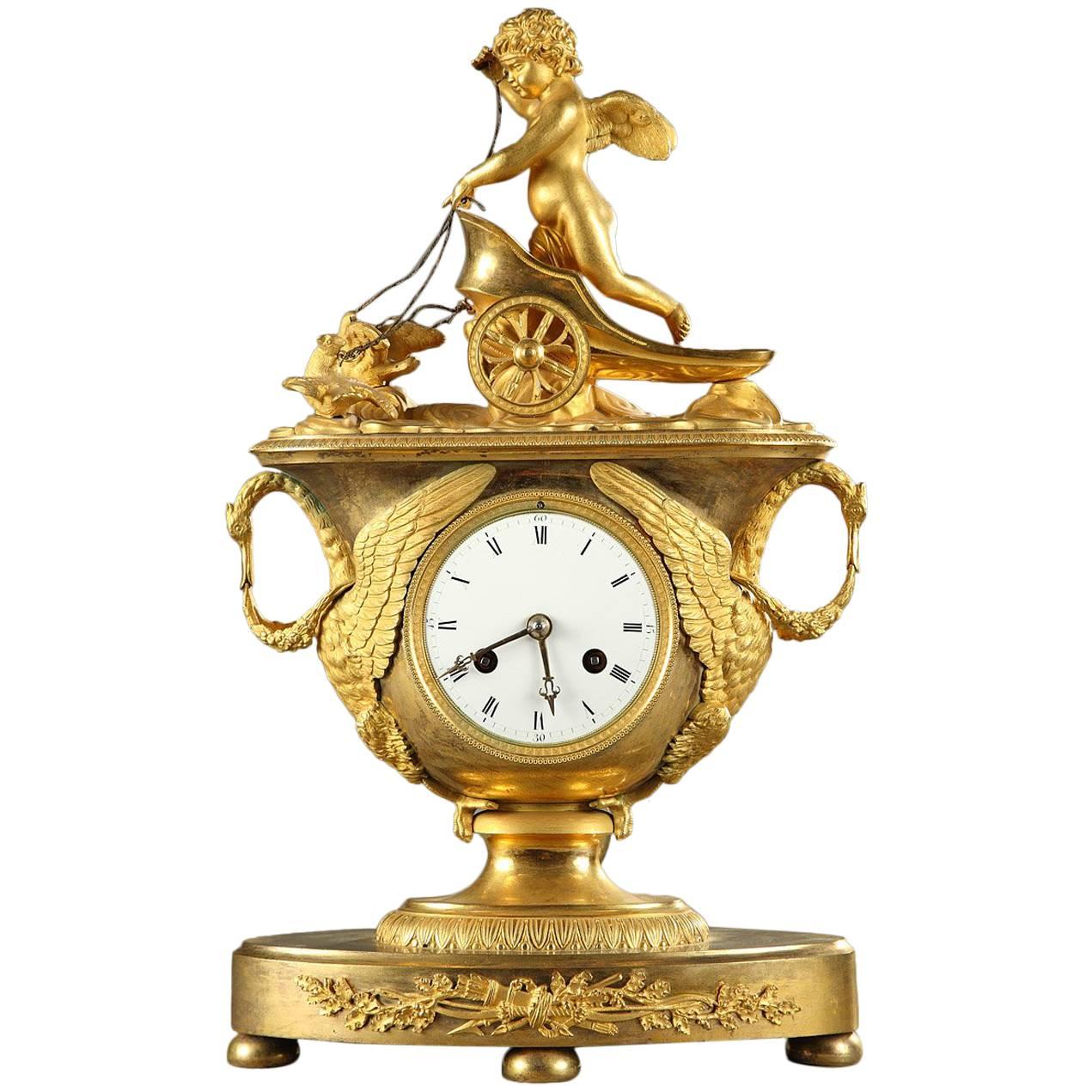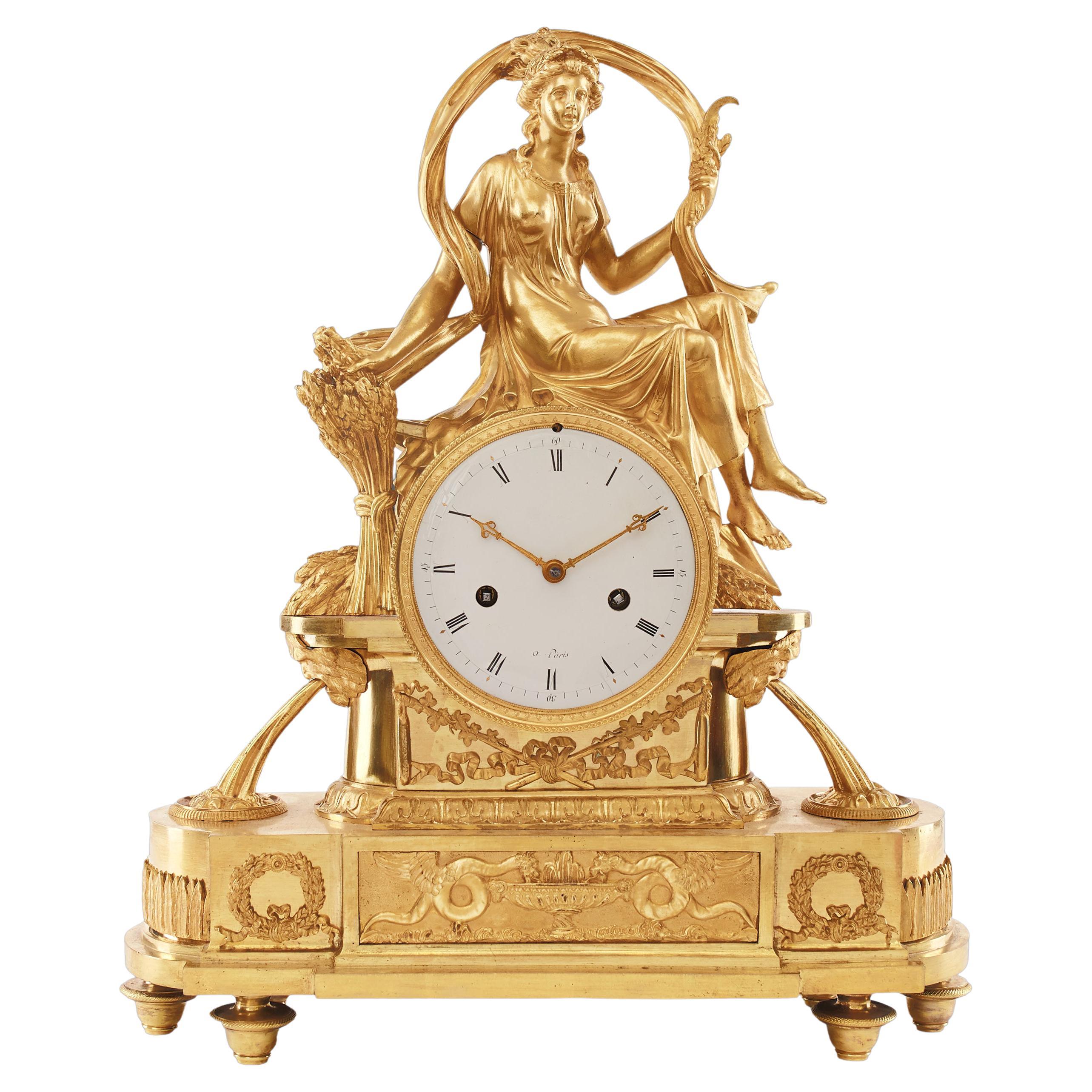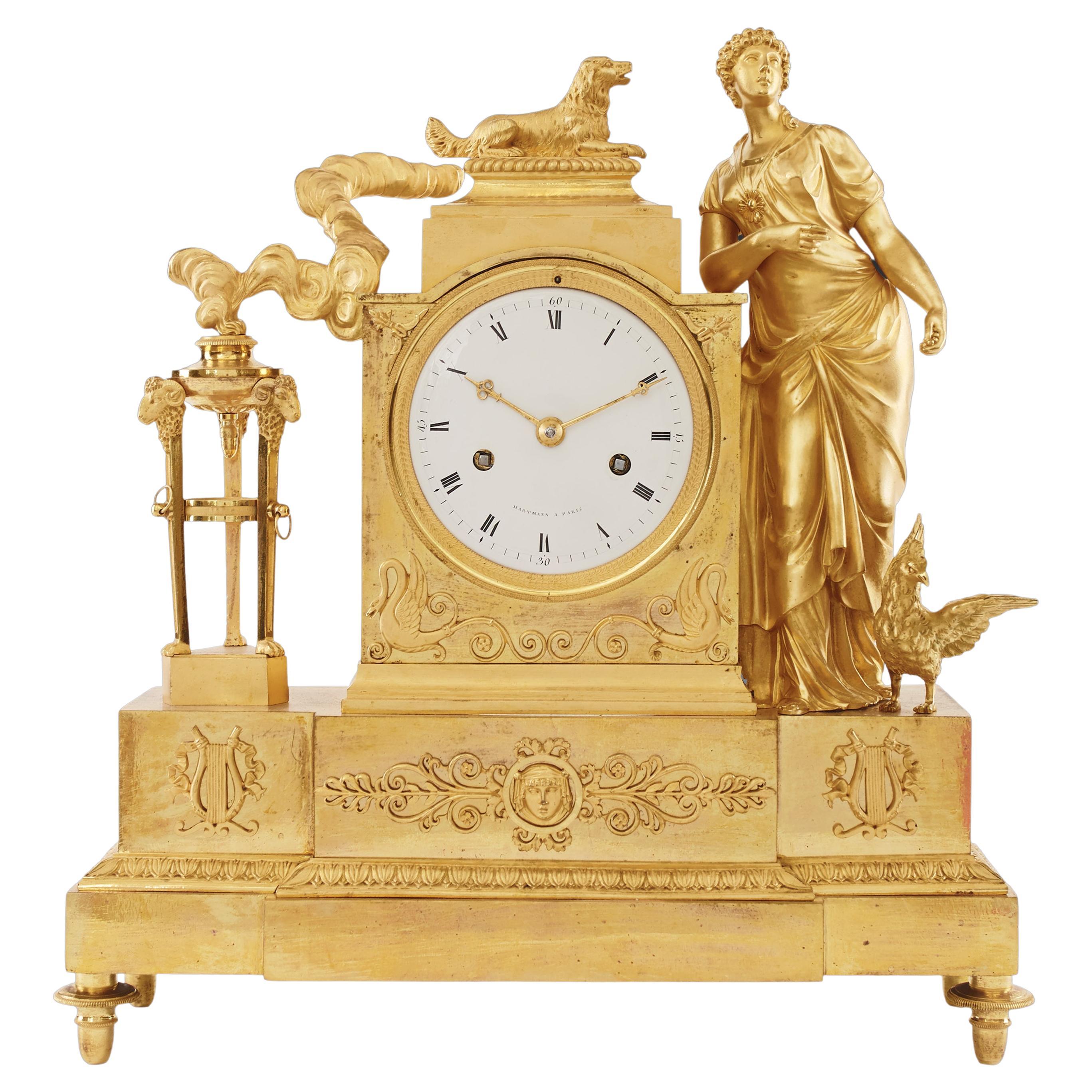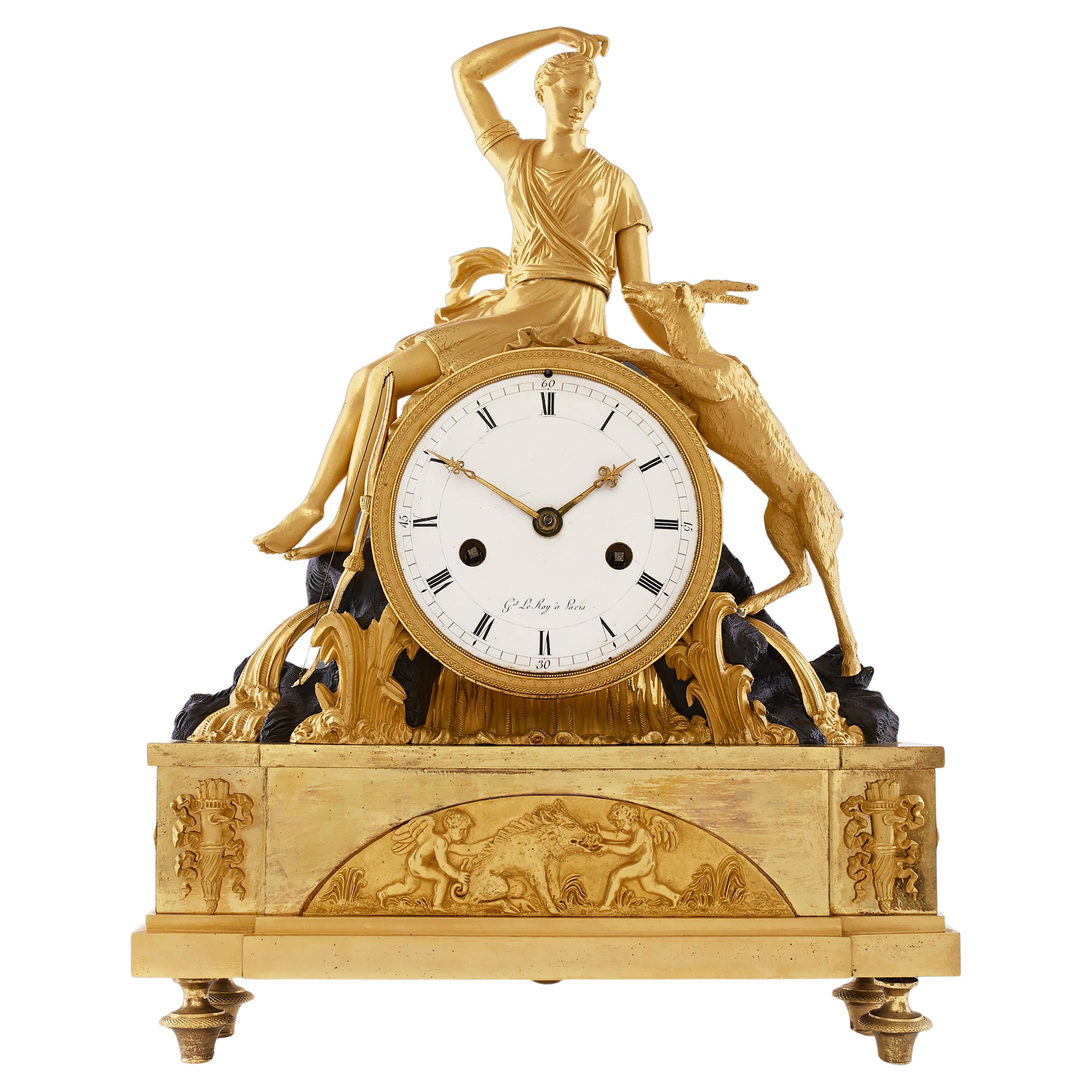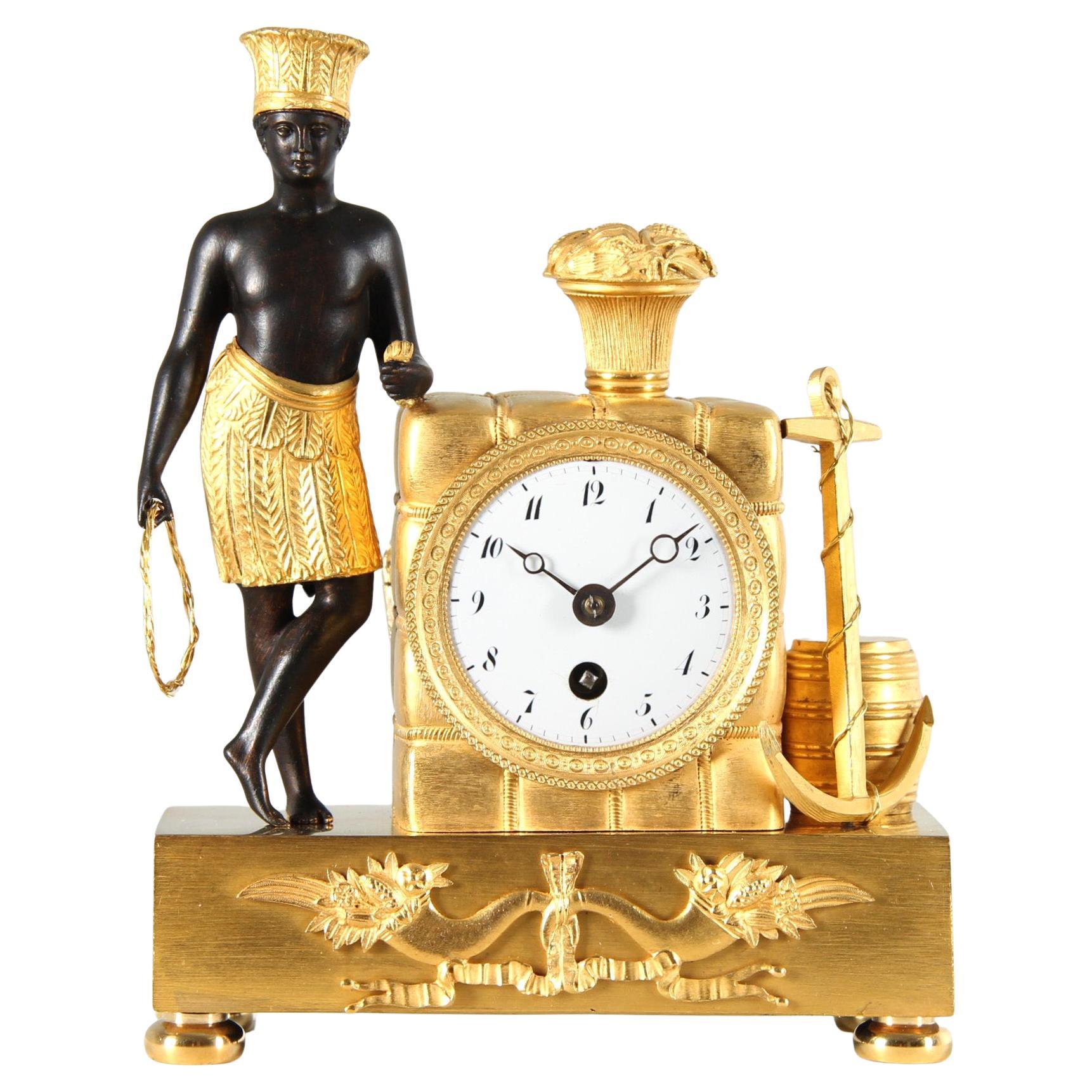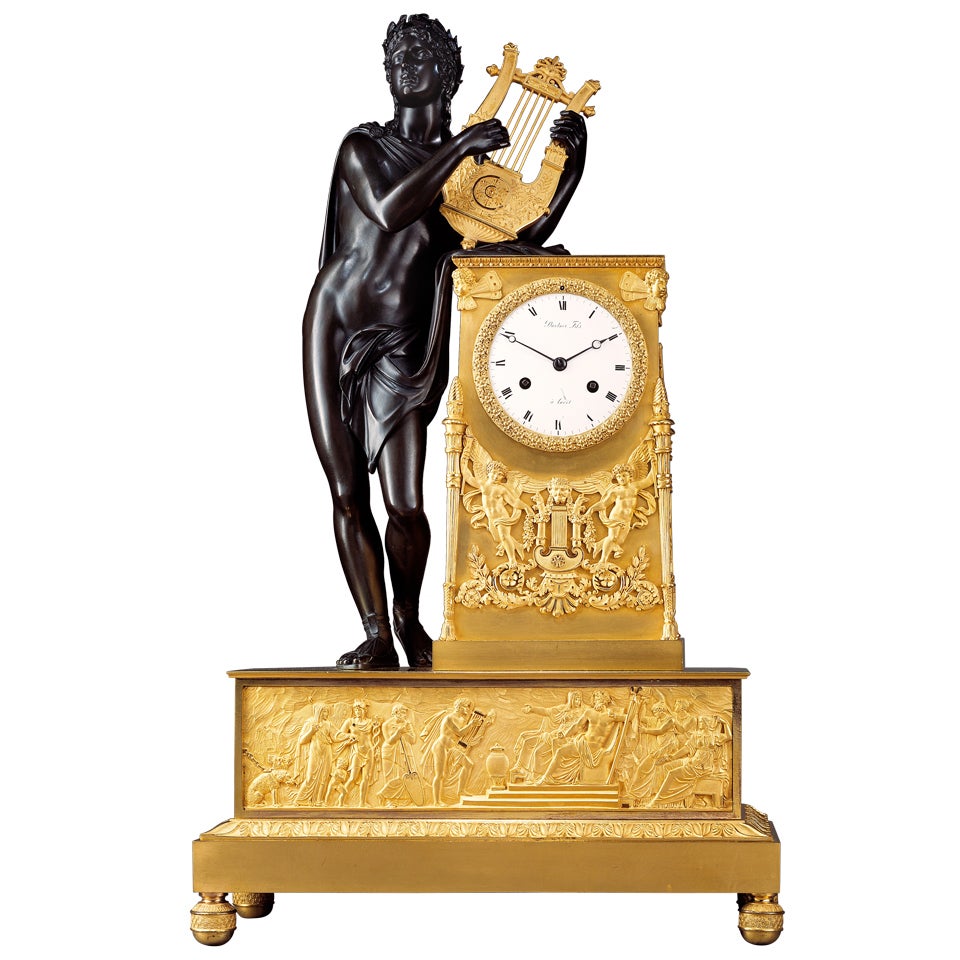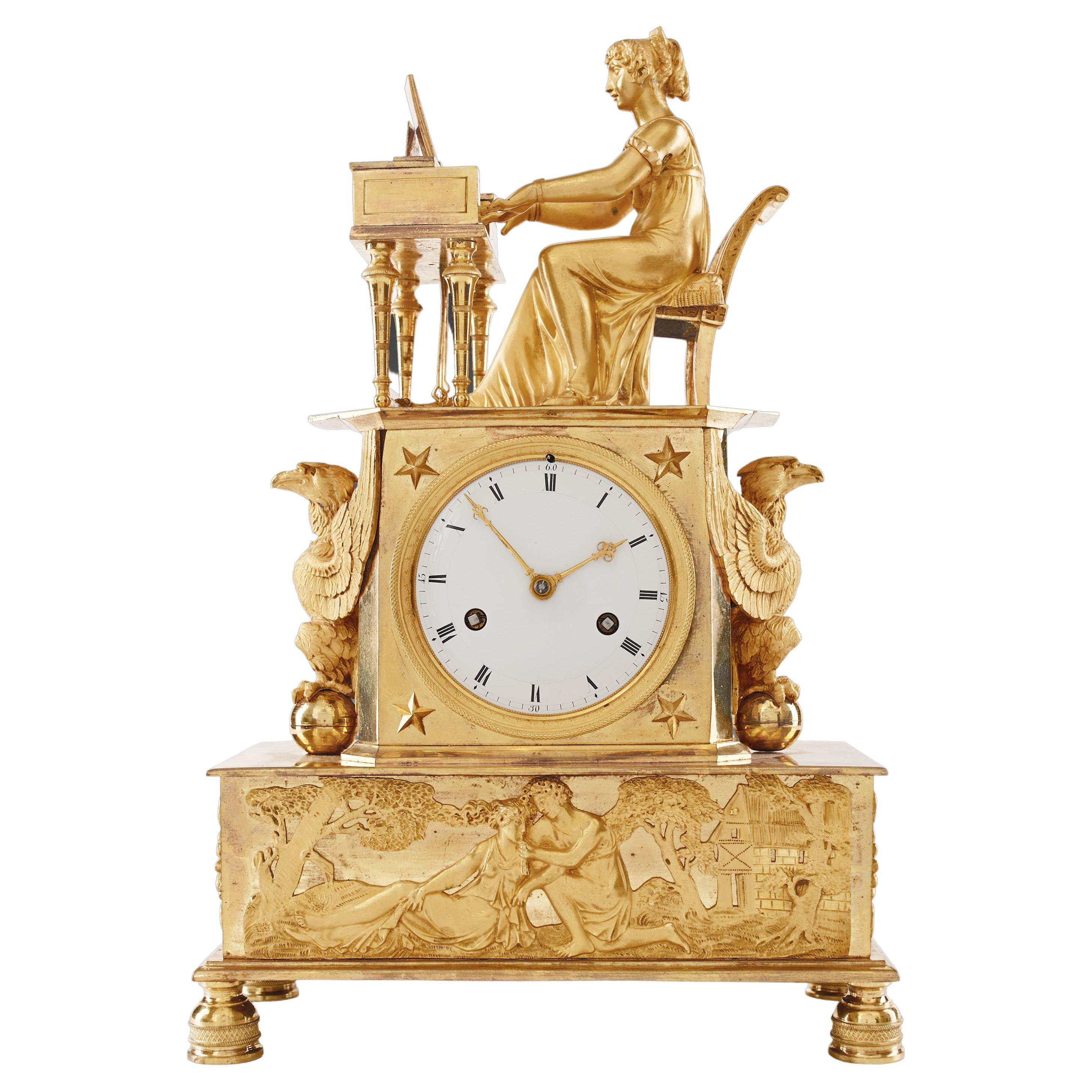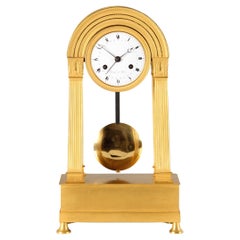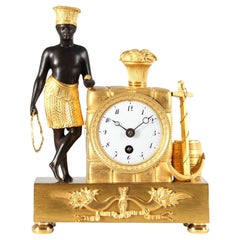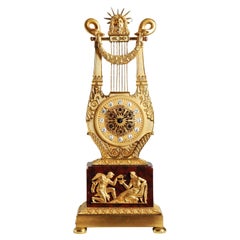
Early 19th Century Empire Mantel Clock in shape of a Lyre, Paris, circa 1815
View Similar Items
Video Loading
Want more images or videos?
Request additional images or videos from the seller
1 of 15
Early 19th Century Empire Mantel Clock in shape of a Lyre, Paris, circa 1815
About the Item
- Creator:Louis Isidore Choiselat 1 (Sculptor)
- Dimensions:Height: 18.9 in (48 cm)Width: 7.88 in (20 cm)Depth: 5.12 in (13 cm)
- Style:Empire (Of the Period)
- Materials and Techniques:
- Place of Origin:
- Period:
- Date of Manufacture:1810-1820
- Condition:The movement has been completely dismantled and cleaned. It runs absolutely reliably and accurately. The bronze and marble have been gently cleaned. The original fire gilding is in a very desirable state of preservation.
- Seller Location:Greven, DE
- Reference Number:1stDibs: LU5419241065642
About the Seller
4.9
Platinum Seller
Premium sellers with a 4.7+ rating and 24-hour response times
Established in 2014
1stDibs seller since 2020
177 sales on 1stDibs
Authenticity Guarantee
In the unlikely event there’s an issue with an item’s authenticity, contact us within 1 year for a full refund. DetailsMoney-Back Guarantee
If your item is not as described, is damaged in transit, or does not arrive, contact us within 7 days for a full refund. Details24-Hour Cancellation
You have a 24-hour grace period in which to reconsider your purchase, with no questions asked.Vetted Professional Sellers
Our world-class sellers must adhere to strict standards for service and quality, maintaining the integrity of our listings.Price-Match Guarantee
If you find that a seller listed the same item for a lower price elsewhere, we’ll match it.Trusted Global Delivery
Our best-in-class carrier network provides specialized shipping options worldwide, including custom delivery.More From This Seller
View AllEarly 19th Century French Empire Mantel Clock, Portal Pendule, Paris circa 1820
By Duval
Located in Greven, DE
Antique French round arch portal clock
France (Paris)
Bronze, enamel
Empire circa 1820
Dimensions: H x W x D: 47 x 26 x 12 cm
Description:
Very beautiful, strictly architecturally...
Category
Antique Early 19th Century French Empire Mantel Clocks
Materials
Bronze, Enamel
19th French Empire Mantel Clock, Pendule, Mercury, Gilded Bronze, circa 1815
Located in Greven, DE
19th century French pendule, mantel clock - Mercury the messenger of the gods
France
Bronze gilded
Empire around 1815
Dimensions: H x W x D: 37 x 30 x 10 cm
Description:
French Empire...
Category
Antique Early 19th Century French Empire Mantel Clocks
Materials
Bronze
$7,166 Sale Price
30% Off
Early 19th Century Empire Clock, Miniature Matelot "Au Bon Sauvage", circa 1815
Located in Greven, DE
Miniature Empire Bronze Clock - Matelot
Paris
fire-gilded and patinated bronze
early 19th century
Dimensions: H x W x D: 18 x 14 x 9 cm
Description:
Very rare miniature of the famous Pendule Matelot "Au Bon Sauvage". The depiction deals with an important topic of the time, trade with the colonies.
The rectangular base stands on pressed ball feet. Attached to the front, we see two cornucopias filled with exotic fruits and held by a bow.
A young sailor, dressed in a raffia skirt and feather jewellery...
Category
Antique 1810s French Empire Mantel Clocks
Materials
Bronze
French Empire Ormulu Bronze Mantel Clock, Lepaute, Thomire, Paris, circa 1815
Located in Greven, DE
Ormulu pendule with depiction of friendship and love
Paris (Lepaute, Thomire)
fire-gilt bronze
Empire around 1815
Dimensions: H x W x D: 44 x 36 x 13 cm
French pendulum movement with eight days duration. Thread suspension and lock disc striking movement with strike on bell on the half and full hour.
White enamel dial with Roman hour numerals and Breguet hands.
Signature: LePaute & Fils / Hrl. du Roi (Pierre-Basile Lepaute (1750 - 1843) with his son Pierre-Michel Lepaute (1785-1849); from 1811 in joint workshop).
Description:
The extremely high quality pendulum shown here takes up a profound theme: Friendship, which combines with love and can thereby outlast time and death. As it is typical for the epoch of classicism, personifications and symbols are taken from the fund of ancient mythology and art and then developed further.
The main figure is a young woman in an antique, girded garment, standing barefoot and with crossed legs next to an altar, on which she is leaning with her left elbow. She gracefully bows her head towards a tempestuously approaching Cupid, grasps his right hand with her left and draws him to her bosom, the seat of the heart. The delicate ambivalence of flying towards and being held culminates in the trustingly intimate look that the two cast at each other.
The young woman personifies friendship, the winged Cupid love. As a sign of their intimate connection, two burning hearts appear on the altar next to the two, framed by the puffed scarf, which are closely bound together by a chain of flowers.
Next to them, on the altar slab, one can see an erected book with the title "Amitie" (French: amitie, friendship). Supporting the book is a pomegranate held by a ring of pomegranate flowers. The bursting seeds spill out of the cracked skin. Since ancient times, the pomegranate and its blossoms have been dedicated to the goddess Persephone, symbolizing the underworld and death, but also life and fertility. The myrtle interwoven in the pomegranate flower wreath of "friendship" also has a far-reaching symbolic power: the plant was dedicated to the goddess Aphrodite, stands for virginity, and was and is therefore obligatory in the bridal wreath...
Category
Antique Early 19th Century French Empire Mantel Clocks
Materials
Bronze, Enamel
Early 19th Century Ormolu Mantel Clock, Atala freeing Chactas, Paris, circa 1810
Located in Greven, DE
Mantel Clock "Atala and Chactas"
Paris
Bronze (fire-gilt and patinated), enamel
Empire around 1810
Dimensions: H x W x D: 40 x 32 x 11 cm
Description:
Very rare and extremely high quality French mantel clock, so-called Pendule Au Bon Sauvage.
Depicted are scenes from the love story "Atala or the love of two savages in the desert" written by Francois René Vicomte de Chateaubriand in 1801. At the beginning of the 19th century, this was probably the most famous love story in Europe, but today it has been forgotten.
The story, set in present-day Louisiana (USA), is roughly rewritten about the forbidden love between Chactas, a young Indian, and Atala, the beautiful daughter of a Spaniard.
Chactas is captured in a battle between two Indian tribes, chained to a palm tree and is to be sacrificed. Atala wants to save his life and convert him to Christianity. She unties him from the palm tree at night and they flee together into the wilderness of North America. Their love for each other grows stronger and stronger and they have prospects for a future together.
The story takes a tragic turn when Atala, who must remain a virgin due to a vow made by her mother, can no longer withstand the conflict of her feelings and commits suicide.
The main group of characters thus shows Chacta's liberation through Atala. Atala is leaning against a pile of logs. The animal fur thrown over the logs and the weapons leaning against the stack on the right give the impression of a night camp.
The bronze is of rarely beautiful quality, finely chiselled and makes the scene appear very lively. The contrast of fire-gilded and patinated bronze adds tension to the composition.
In the base we see the Entombment as the end of the tragic love story. This bronze work is also very detailed, the interplay of bright and matt gilding makes the flat relief appear much deeper than it is.
The depiction of the mantel clock presented here shows that the exotic was only known from stories and that the bronzier had his own ideas about the appearance of this distant world. The Indian, for example, has very European facial features and his skin was not black in reality, of course. The palm tree was also certainly not found in the North American wilderness.
The heart of the clock is a French pendulum movement, integrated into the wooden pile, with an eight-day power reserve and a lock plate striking a bell on the half and full hour. The pendulum is suspended on a thread, typical of the period. The classically shaped hands, so-called Breguet hands, are also typical of the time.
The enamelled dial has black Roman hour numerals, Arabic quarter hours and bears the signature: Le Roy hr. de Madame A PARIS.
Interesting facts:
The period from 1795 to about 1815 saw the creation of probably the most spectacular group of bronzes: The "Au bon Sauvage" pendulums - depictions of the "Noble Savage".
Today's viewers react to these objects with both fascination and irritation. Enthusiastic on the one hand about the obvious quality of the detailed bronzes and the allure of the exotic, on the other hand distanced and cautious because of the possible discrimination that is suspected behind them. The ambivalence of this feeling motivates the search for the conditions of origin of these pendulums.
Europeans found their new ideal of the natural man primarily in fictional and realistic travelogues about the Indians of North America...
Category
Antique Early 19th Century French Empire Mantel Clocks
Materials
Ormolu
Early 19th Century Pendule Portefaix, Mantel Clock, Paris and Brussels, c. 1810
By J. J. Hanset Bruxelles 1
Located in Greven, DE
Empire Pendule Portefaix
Paris, Brussels
Bronze, enamel
Empire around 1810
Dimensions: H x W x D: 36 x 28 x 11 cm
Description:
Beautiful, fire-gilded and patinated bronze mantel c...
Category
Antique Early 19th Century Belgian Empire Mantel Clocks
Materials
Brass, Bronze, Enamel
You May Also Like
Mantel Clock 19th Century Empire
Located in Warsaw, PL
Figural mantel clock signed “Al. dre Destape Palais Royal”
The bronze figural mantel clock depicting one of the mythical heroes - Orpheus originates from the Empire period. The cloc...
Category
Antique Early 19th Century French Empire Mantel Clocks
Materials
Bronze
19th Century Empire Mantel Clock
Located in Los Angeles, CA
Excellent condition with finely chased dore bronze mounts. Has key and pendulum.
Category
Antique Early 19th Century French Empire Mantel Clocks
Materials
Bronze
19th Century Empire Mantel Clock
Located in Ljungby, SE
An Empire mantel clock in gilded wood, made in Austria or Germany 1820-1830. It features a warrior dressed in classical armor with his arm resting atop the clock. The clock pillar is...
Category
Antique 19th Century European Empire Mantel Clocks
Materials
Wood
Early 19th Century Empire Mantel Clock with Cupid in a Chariot
By Marie Prevost
Located in Paris, FR
Exceptional gilt bronze mantel clock with its key depicting a winged Cupid in a chariot. The chariot is pulled by two doves that are resting on a platform adorned with water-leaf. Th...
Category
Antique Early 19th Century French Empire Mantel Clocks
Materials
Bronze
Mantel Clock 19th Century Styl Empire by Cérés À Paris
Located in Warsaw, PL
Empire clock signed à Paris
The mantel clock is in gilded bronze representing Ceres as a goddess of fertility, agriculture, grain crops and motherly relationships. In ancient Rom...
Category
Antique Early 19th Century French Empire Mantel Clocks
Materials
Bronze
Mantel Clock 19th Century Styl Empire by Hartmann À Paris
Located in Warsaw, PL
An exceptional 19th-century Empire-style mantel clock by Hartmann à Paris, meticulously crafted in gilt bronze. This distinguished timepiece showcases a finely detailed white enamel ...
Category
Antique Early 19th Century French Empire Mantel Clocks
Materials
Bronze
